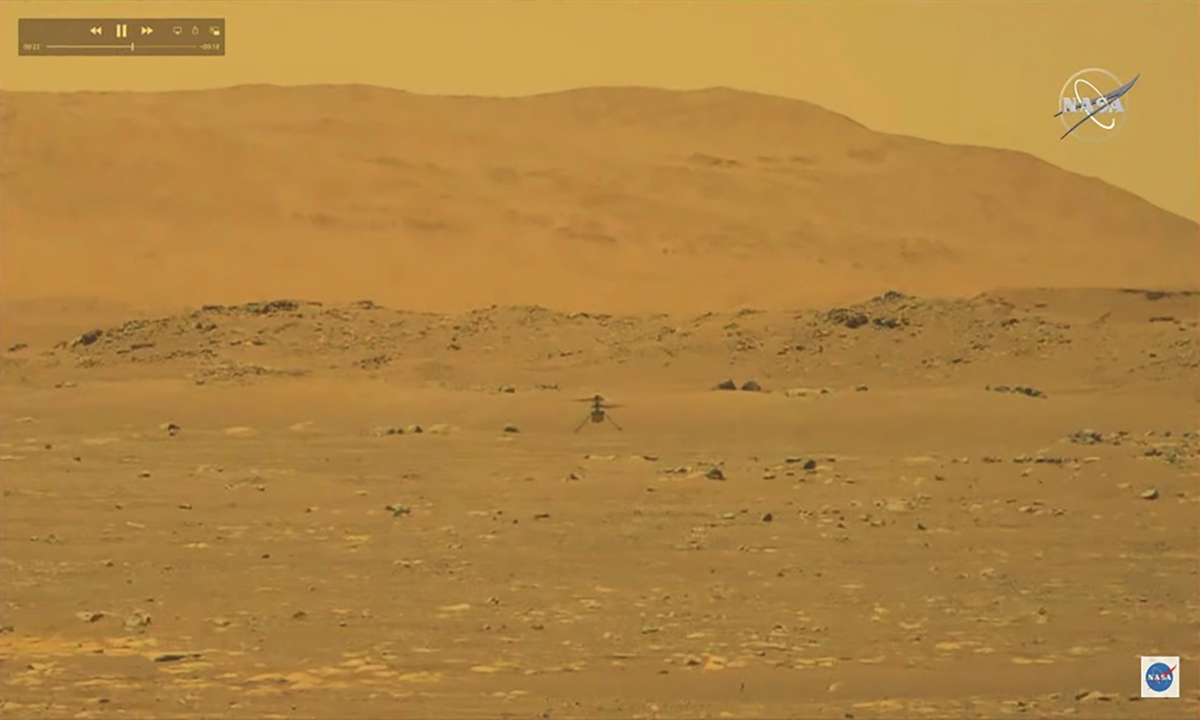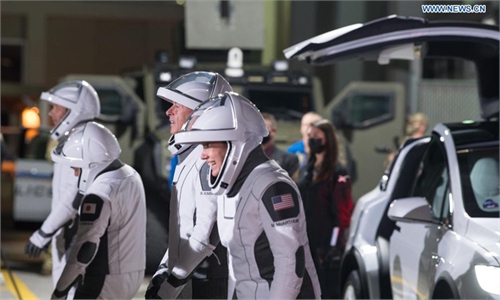After six long months on Mars, NASA's tiny helicopter still flying high
'Ingenuity' continues exploration mission

A handout video taken from a livestream by NASA shows NASA's Ingenuity Mars Helicopter during its first test flight, as seen by NASA's Perseverance Rover, on Mars, on Monday. According to NASA, Ingenuity has successfully performed a short flight on Mars, the first ever helicopter flight on another planet. Photo: IC
It was only supposed to fly five times. And yet NASA's helicopter on Mars, Ingenuity, has completed 12 flights and it isn't ready to retire.
Given its stunning and unexpected success, the US space agency has extended Ingenuity's mission indefinitely.
The tiny helicopter has become the regular travel companion of the rover Perseverance, whose core mission is to seek signs of ancient life on Mars.
"Everything is working so well," said Josh Ravich, head of Ingenuity's mechanical engineering team. "We're doing better on the surface than we had expected." Hundreds of people contributed to the project, though only about a dozen currently retain day-to-day roles.
Ravich joined the team five years ago. "When I got the opportunity to come work on the helicopter project, I think I had the same reaction as anybody else: 'Is that even possible?'"
His initial doubts were understandable: The air on Mars has a density equivalent to only 1 percent that of Earth's atmosphere. By way of comparison, flying a helicopter on Mars would be like flying one in the thin air nearly 30 kilometers above Earth.
Nor was it easy getting to Mars in the first place. Ingenuity had to withstand the initial shock of takeoff from Earth, and then of the February 18 landing on the Red Planet following a seven-month voyage through space, strapped to the rover's belly.
Once in its new surroundings, the tiny (1.8 kilogram) copter has had to survive the glacial cold of Martian nights, drawing warmth from the solar panels that charge its batteries during the day.
And its flights are guided using an array of sensors, since the 15-minute lag in communications from Earth makes real-time guidance impossible.
On April 19, Ingenuity carried out its maiden flight, making history as the first motorized craft to fly on another planet. Exceeding all expectations, it has gone on to fly 11 more times.
"We've actually been able to handle winds greater than we had expected," Ravich told AFP.
"I think by flight three we had actually accomplished all of our engineering goals... [and] got all the information we had hoped to get," said Ravich, who works for NASA's famed Jet Propulsion Laboratory (JPL), which developed the helicopter.
Since then, Ingenuity has flown as high as 12 meters, and its last flight lasted two minutes and 49 seconds. In all, it has covered a distance of 2.5 kilometers.
In May, Ingenuity flew its first one-way mission, landing outside the relatively flat "airfield" that had been carefully selected as its initial home. But not all has gone smoothly. Its sixth flight has brought some excitement.
After being knocked dangerously off-balance by a malfunction affecting the photos taken in flight to help it stabilize, the tiny craft was able to recover. It landed, safe and sound, and the problem was resolved.
Ingenuity is now being sent out to scout the way for Perseverance with its high-resolution color camera.
The purpose serves as twofold: to chart a path for the rover that is safe, but also which is of scientific interest, notably in geological terms.



